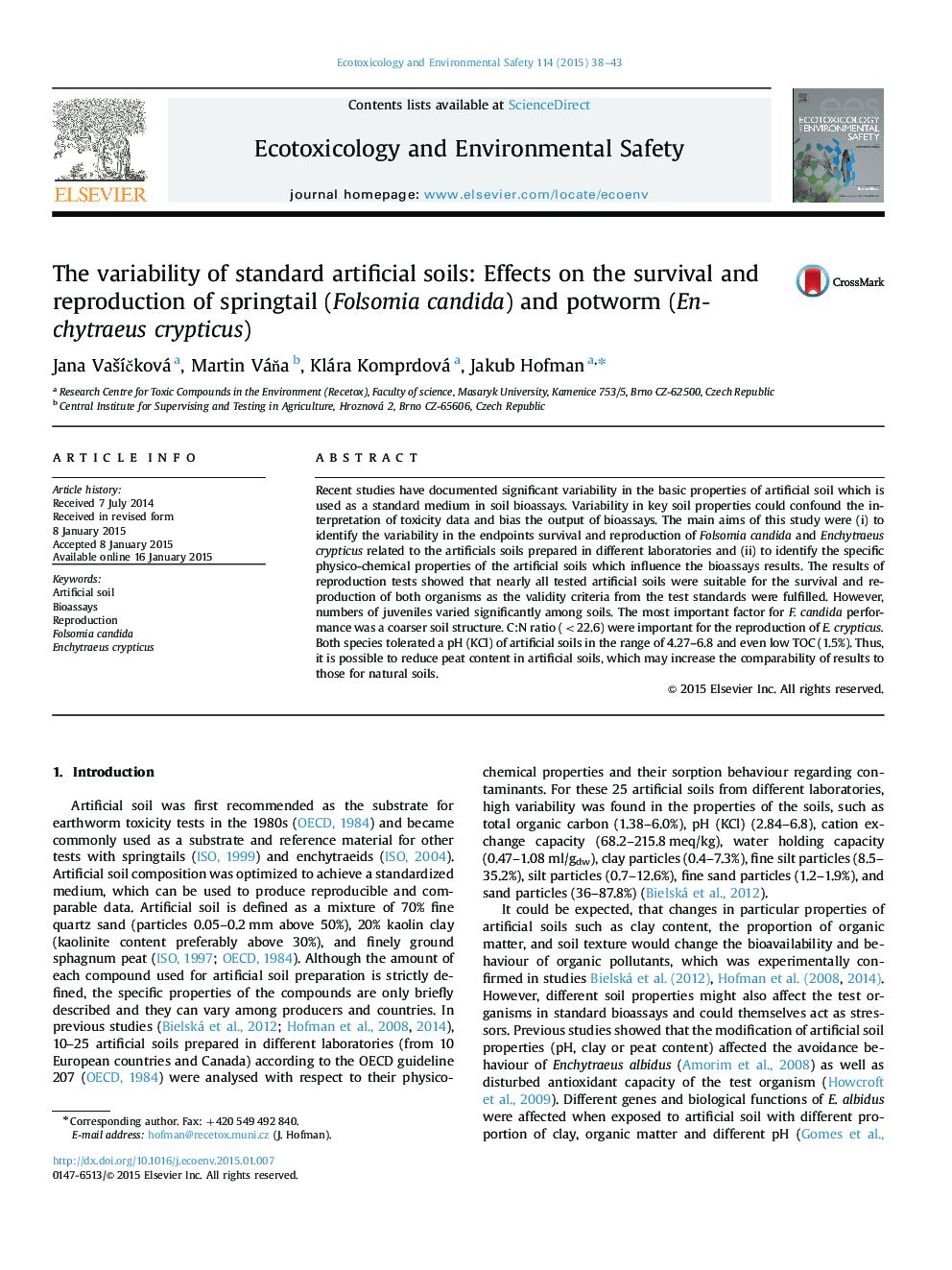| Article ID | Journal | Published Year | Pages | File Type |
|---|---|---|---|---|
| 4419805 | Ecotoxicology and Environmental Safety | 2015 | 6 Pages |
•The suitability of 25 artificial soils was tested for F. candida and E. crypticus.•Key soil properties influencing the endpoints of bioassays were identified.•F. candida reproduction was influenced by artificial soil texture.•Optimal pH and C/N ratio were important for E. crypticus.
Recent studies have documented significant variability in the basic properties of artificial soil which is used as a standard medium in soil bioassays. Variability in key soil properties could confound the interpretation of toxicity data and bias the output of bioassays. The main aims of this study were (i) to identify the variability in the endpoints survival and reproduction of Folsomia candida and Enchytraeus crypticus related to the artificials soils prepared in different laboratories and (ii) to identify the specific physico-chemical properties of the artificial soils which influence the bioassays results. The results of reproduction tests showed that nearly all tested artificial soils were suitable for the survival and reproduction of both organisms as the validity criteria from the test standards were fulfilled. However, numbers of juveniles varied significantly among soils. The most important factor for F. candida performance was a coarser soil structure. C:N ratio (<22.6) were important for the reproduction of E. crypticus. Both species tolerated a pH (KCl) of artificial soils in the range of 4.27–6.8 and even low TOC (1.5%). Thus, it is possible to reduce peat content in artificial soils, which may increase the comparability of results to those for natural soils.
